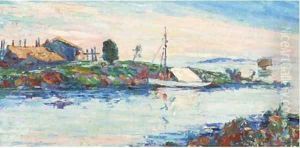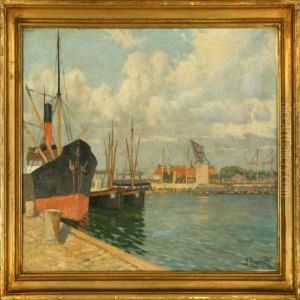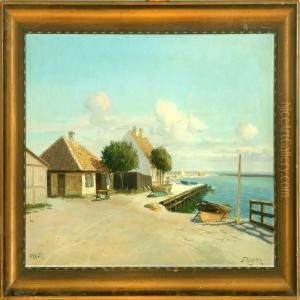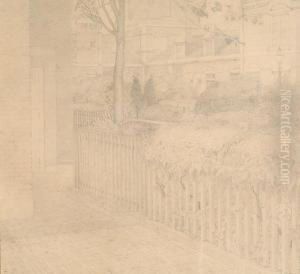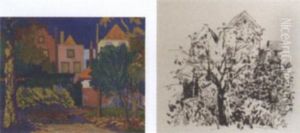Johannes Frederik Engelbert Ten Klooster Paintings
Johannes Frederik Engelbert Ten Klooster was a Dutch artist known for his versatility in various art forms, including painting, drawing, and woodcut printmaking. He was born on August 26, 1873, in Zwolle, Netherlands. His artistic talents became evident at an early age, and he was encouraged to pursue an education in art. Ten Klooster initially trained at the Royal Academy of Art in The Hague, where he developed a strong foundation in traditional artistic techniques.
During his career, Ten Klooster was heavily influenced by his time in the Dutch East Indies, now Indonesia. He served in the Dutch colonial army, and his experiences there had a profound impact on his work. The artist became fascinated with the culture, landscapes, and people of Indonesia, which became a recurring theme in his art. His woodcuts, in particular, reflect the aesthetics and motifs of Indonesian art, blended with European artistic traditions.
After returning to the Netherlands, Ten Klooster settled in The Hague and continued to work and exhibit his art. His woodcuts gained recognition for their bold lines and expressive forms, and he was considered a master of the medium. His prints often featured scenes of daily life, landscapes, and portraits, characterized by a synthesis of Eastern and Western artistic styles. Despite his success, Ten Klooster struggled with financial difficulties and personal challenges throughout his life.
Johannes Frederik Engelbert Ten Klooster passed away on January 23, 1940, in The Hague. His contributions to the field of printmaking and his unique blend of cultural influences have ensured his place in the history of Dutch art. His works are still appreciated for their technical skill and distinctive stylistic approach, bridging different art traditions and offering a glimpse into the cultural exchanges between Europe and Asia in the early 20th century.
